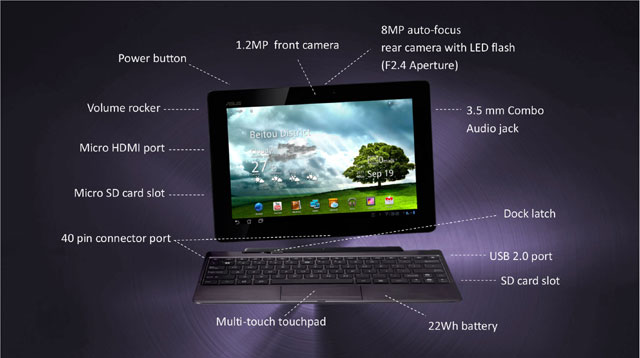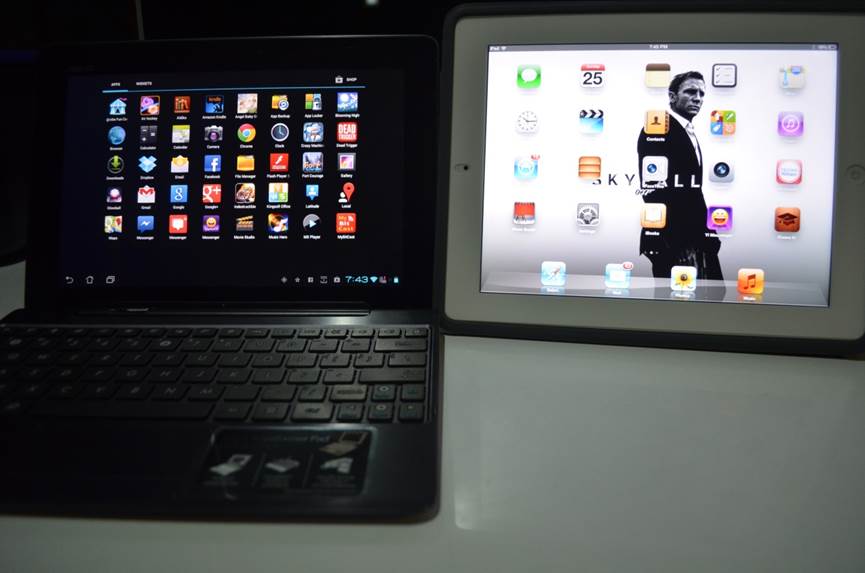MyGear: Transformer Prime Infinity TF700
My Gear: Asus Transformer Prime Infinity TF700
by Hadrian Ang
Last 2011, Asus released the Eee Pad Transformer TF101. At first, the TF101 seemed just like any other Android tablet. Running on Honeycomb and an Nvidia Tegra 2, it had specifications similar to other high-end devices such as the iPad 2, Samsung Galaxy Tab 10.1 and Acer Iconia A500, but what made it different was its keyboard dock, which effectively made it both a tablet and netbook.
Fast forward to the present and one sees the 4th device in the company’s Transformer line, the TF700. Officially called the Asus Transformer Prime Infinity, the device further improves on the hybrid experience: it brings a metal construction, a 1920×1200 pixel Super IPS+ display, the latest Nvidia Tegra 3 SoC (System-on-a-Chip) and Android 4.1 Jelly Bean to create a hybrid tablet that is, possibly, the best Android device of the year.
Though specs on paper do not always translate into real world performance, the TF700 does not disappoint. The screen is impressive both on paper and in real life as it presents great viewing angles and color representation. Its Nvidia Tegra 3 SoC seems to run everything quite well although there are still a few performance hiccups. These are of course rare, though, curiously, they seem to appear even when using some applications that aren’t very processor intensive such as e-book readers. In normal use, however, it works smoothly and is able to take even the heaviest of loads from today’s newest 3D games. Impressively, the tablet also lasts quite long per charge despite its powerful internals.
Obviously, the most unique feature of the device is its keyboard dock which effectively transforms it into a netbook. Unlike Bluetooth keyboard cases for other tablets, the TF700’s dock is one of its touted features and has thus received more attention. The dock features an all-metal construction, a track pad capable of two-finger scrolling, a full USB 2.0 port (with support for external storage, mice, keyboards and game controllers), and its own battery pack, effectively extending the battery of the TF700 to about 14 hours when docked. Though the keyboard would feel cramped for those used to larger computers, the keys are actually quite good and most netbook users would feel at home with it. Together with the bundled Polaris Office and other office applications for Android, the TF700 can be a capable work machine.
I usually use the device for basic web surfing, music, and videos, all of which, it handles quite well. Its browser renders web pages well, but the newest version now lacks flash support, so some content might not work on the tablet. The TF700 is a capable multimedia machine as it handles HD videos with ease. The experience is not perfectly seamless, however, since the operating system itself has stability issues. Although running on Android 4.1 Jelly Bean, the launcher still crashes and slows downs every now and then. Compared to the 3rd generation iPad, it crashes more often, but not enough to totally dismiss the tablet.
The Asus Transformer series really does offer a flexible computing experience, but the Android OS fails to keep things stable and smooth throughout the whole user experience. The form factor helps make up the device’s hiccups as it brings the tablet experience closer to replacing a desktop. In fact, the form factor is so successful that other manufacturers such as Samsung and Lenovo have adopted it for their own products (though most will be running Windows 8). Overall, the TF700 is a good computer as it performs well on the entertainment and productivity fronts.
With the iPad 3rd Generation



Comments